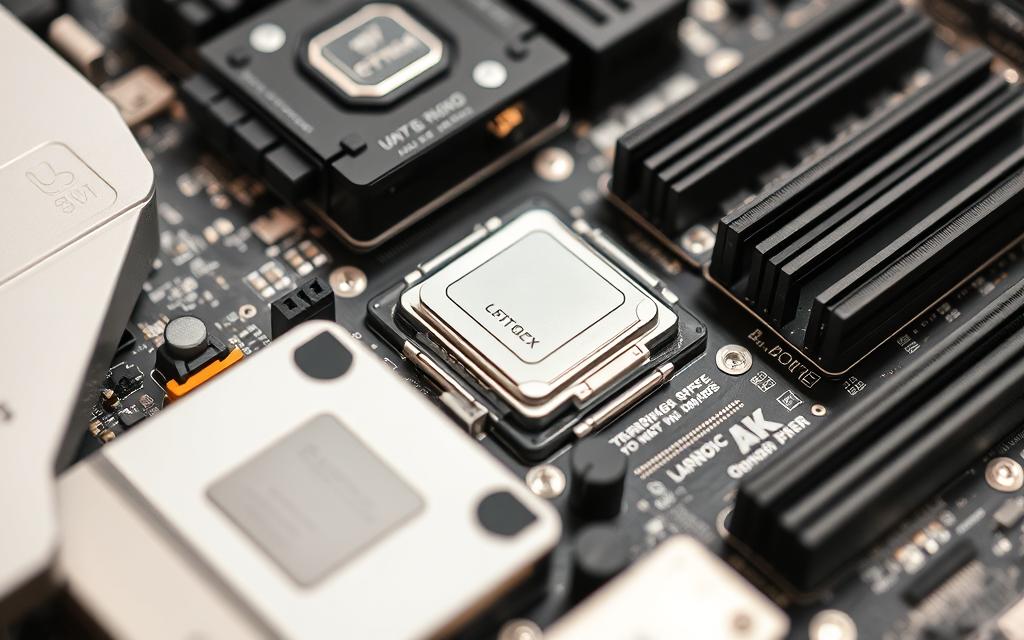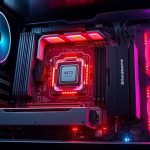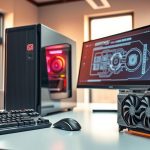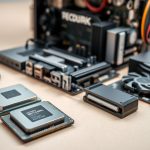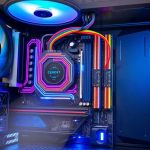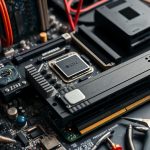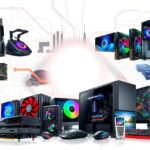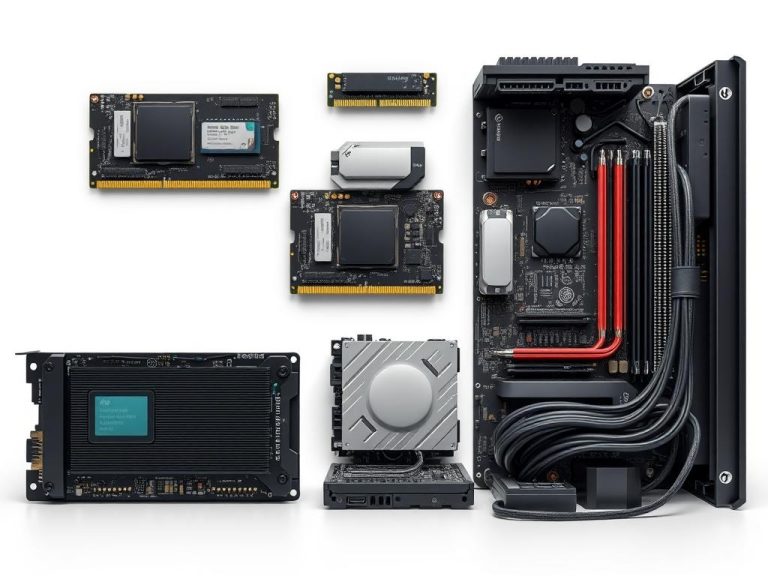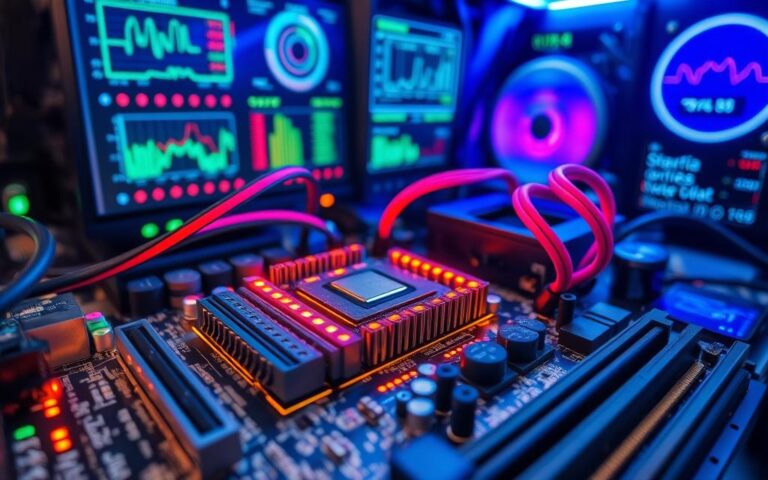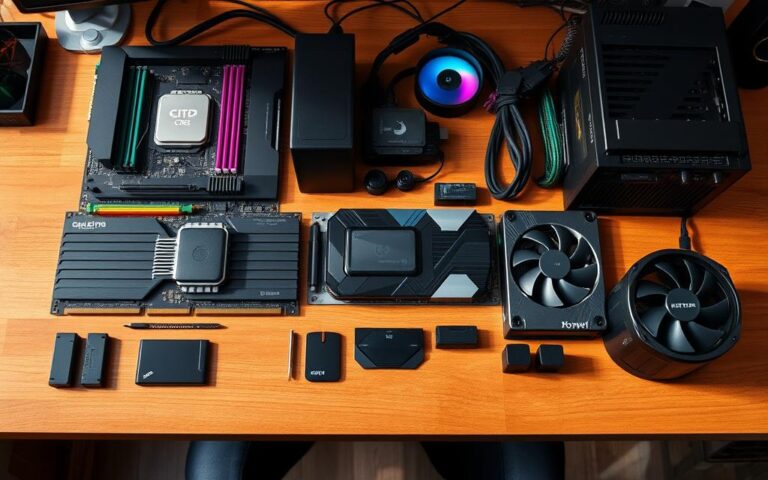The Essential Parts of Computer Hardware You Need to Know
Computer hardware forms the backbone of any system, enabling software to function effectively. These physical components are crucial for tasks like data processing and storage. For IT professionals and DIY enthusiasts, understanding these elements is essential for troubleshooting and upgrades.
Key components include the processing unit (CPU), RAM, storage drives, and motherboard. Each plays a unique role in ensuring smooth operations. For example, the CPU handles calculations, while RAM provides temporary memory for active tasks.
Hardware interacts with software to deliver functionality. Compatibility between components is vital for optimal performance. As technology evolves, advancements like SSDs replacing HDDs highlight the dynamic nature of these systems.
This guide will explore these components in detail, offering insights for career aspirants in computer maintenance and tech enthusiasts alike.
What Are the Parts of Hardware in Computer?
Every computer relies on physical components to execute tasks efficiently. These tangible pieces, often referred to as hardware, form the backbone of any system. Unlike software, which includes operating systems and applications, hardware is the physical equipment you can touch and see.
Internal components are the core of a computer. They include the motherboard, which connects all elements, and the CPU, responsible for processing instructions. RAM provides temporary memory for active tasks, while storage drives like HDDs and SSDs store data permanently. Additional elements like the GPU, PSU, and NIC handle graphics, power supply, and network connectivity.
https://www.youtube.com/watch?v=4XwEsI_OYOM
External devices, such as keyboards, mice, monitors, and printers, allow users to interact with the system. These peripherals are essential for input and output operations. For example, a keyboard lets you type commands, while a monitor displays the results.
Memory types also play a crucial role. RAM is volatile, meaning it loses data when the power is off. In contrast, SSDs are non-volatile, retaining information even without power. Hybrid systems combine both HDDs and SSDs to balance speed and storage capacity.
Hardware and software work together like the body and mind. While hardware provides the physical structure, software delivers the instructions. Tools like the Crucial System Scanner help diagnose hardware issues, ensuring optimal performance. Portable devices like USB flash drives are examples of hardware that store and transfer data easily.
| Component | Function |
|---|---|
| Motherboard | Connects all internal components |
| CPU | Processes instructions |
| RAM | Provides temporary memory |
| Storage Drives | Store data permanently |
| GPU | Handles graphics processing |
| PSU | Supplies power to the system |
| NIC | Manages network connectivity |
Internal Hardware Components: The Core of Your Computer
At the heart of every computer are its internal components. These elements work together to ensure smooth operations and optimal performance. From processing data to storing information, each part plays a critical role.
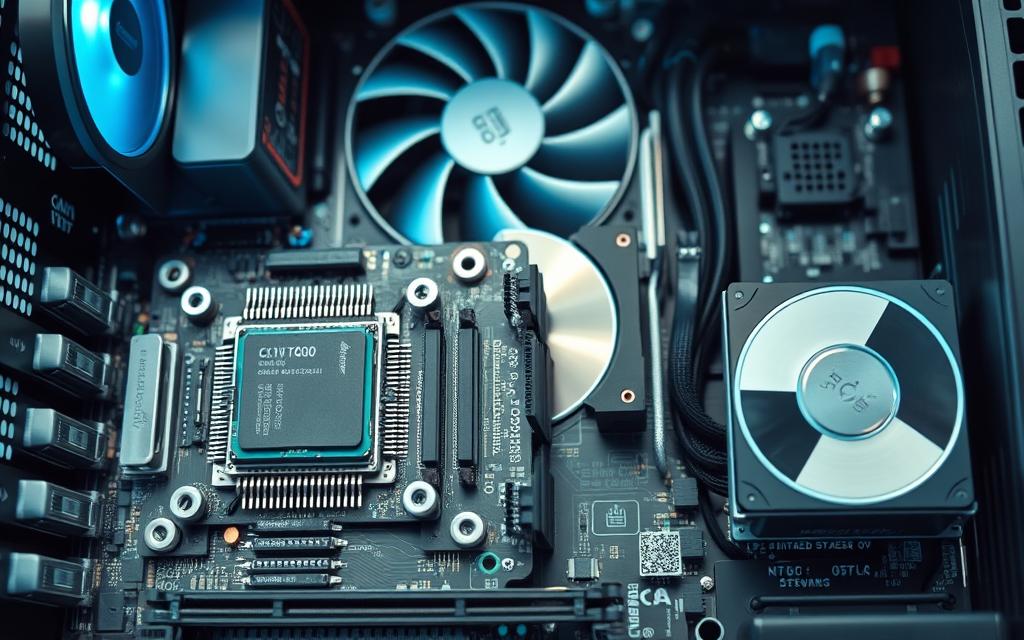
The Motherboard: The Nervous System of Your PC
The motherboard connects all internal components, acting as the central hub. It ensures communication between the CPU, RAM, and storage drives. Without it, the system cannot function.
The CPU: The Brain Behind Operations
The CPU processes instructions and performs calculations. It’s the most critical component for speed and efficiency. Modern CPUs have multiple cores, allowing them to handle complex tasks simultaneously.
RAM: Temporary Memory for Fast Access
RAM provides temporary storage for active tasks. It allows the system to access data quickly, improving performance. More RAM means better multitasking capabilities.
Storage Drives: HDD vs. SSD
Storage drives are essential for saving data permanently. HDDs use spinning platters, offering large capacities at lower costs. SSDs, on the other hand, use NAND flash memory for faster speeds and durability.
Here’s a comparison of HDDs and SSDs:
| Feature | HDD | SSD |
|---|---|---|
| Speed | 5400-7200 RPM | Up to 3500MB/s (NVMe) |
| Durability | Mechanical parts prone to wear | No moving parts, more durable |
| Cost | Lower | Higher |
For optimal performance, use an SSD for the operating system and an HDD for bulk storage. This combination balances speed and capacity.
External Hardware Components: Peripherals and Add-ons
External devices enhance user interaction with computers, making tasks more efficient. These peripherals and add-ons bridge the gap between users and their systems, enabling seamless functionality. From input to output, these components define the computing experience.
Input Devices: Keyboards, Mice, and More
Input devices like keyboards and mice are essential for user interaction. Keyboards allow text entry and command execution, while mice provide precise cursor control. Advanced options include ergonomic designs and wireless connectivity for added convenience.
Output Devices: Monitors and Printers
Output devices like monitors and printers deliver results to users. Monitors display visual content, ranging from basic tasks to high-end graphics work. Printers produce physical copies of digital documents, catering to various needs.
Modern monitors use technologies like LCD, LED, and OLED for vibrant displays. Resolution standards include 4K and 1440p, offering sharp visuals. Color accuracy is crucial for designers, ensuring true-to-life representations.
Adaptive sync technologies like G-Sync and FreeSync reduce screen tearing, enhancing gaming experiences. High refresh rates, from 60Hz to 360Hz, provide smoother motion for fast-paced content.
Printers come in inkjet, laser, and 3D variants. Inkjet printers are cost-effective for home use, while laser printers excel in office environments. 3D printers enable rapid prototyping and creative projects.
| Device Type | Key Features |
|---|---|
| Monitor | 4K resolution, OLED display, G-Sync |
| Printer | Inkjet, laser, all-in-one functionality |
| GPU | High-res display support, graphics card |
For professionals, calibration tools ensure accurate color representation. GPUs with advanced graphics capabilities are essential for high-resolution displays. All-in-one printers combine scanning, copying, and printing for versatile use.
Key Hardware Categories for Different Needs
Different computing needs demand specialized hardware configurations. Whether you’re building a gaming rig or a workstation, selecting the right components ensures optimal performance.
Gaming PCs require high-end GPUs and CPUs to handle demanding tasks like rendering and fast-paced gameplay. In contrast, productivity builds focus on multitasking and efficiency, often prioritizing RAM and storage.
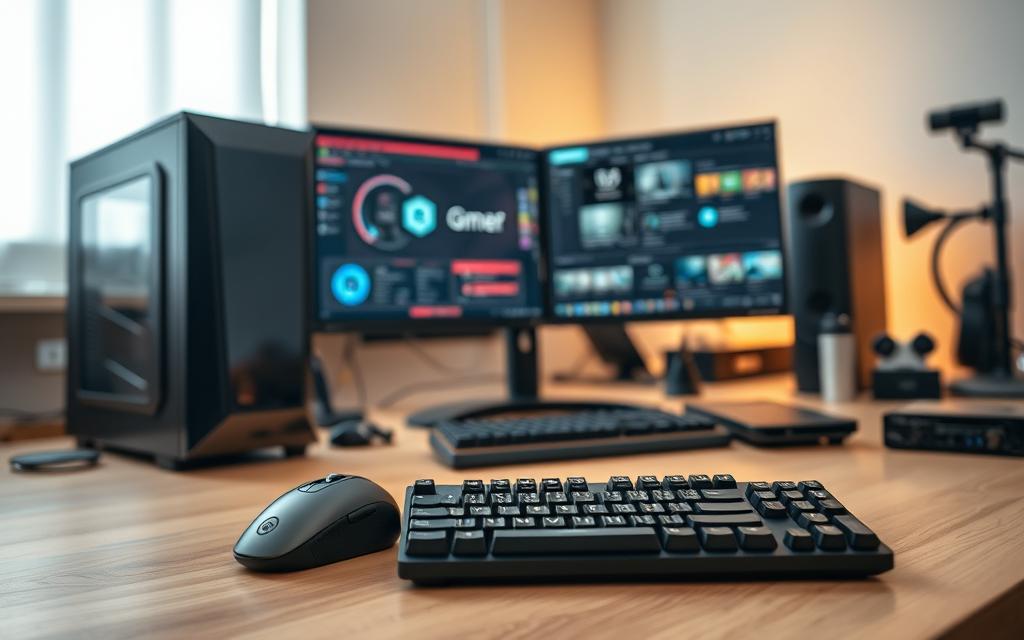
Servers need robust hardware, including ECC RAM for error correction and high-capacity storage for data management. Mobile workstations, designed for portability, often feature compact designs and powerful processors.
Home Theater PCs (HTPCs) benefit from compact cases and quiet operation, ideal for media streaming. Industrial computing solutions, on the other hand, require ruggedized hardware to withstand harsh environments.
Fanless designs are perfect for silent operation, while virtualization hardware supports multiple operating systems simultaneously. Render farms, used for complex graphics rendering, rely on high-performance GPUs and CPUs.
Here’s a quick overview of hardware types by budget:
- Entry-level: Basic CPUs, 8GB RAM, HDD storage.
- Mid-range: Multi-core CPUs, 16GB RAM, SSD storage.
- High-end: Top-tier GPUs, 32GB+ RAM, NVMe SSDs.
For more details on how components like the motherboard and CPU work together, check out this guide.
How Hardware and Software Work Together
The synergy between hardware and software drives modern computing. These two elements collaborate to execute tasks efficiently, ensuring smooth system performance. Without this partnership, computers would not function as we know them.
At startup, the BIOS or UEFI initializes hardware components, preparing them for the operating system. This process ensures all devices are recognized and ready for use. Firmware updates further enhance compatibility and performance.
Drivers act as intermediaries, enabling communication between software and hardware. Kernel-level drivers handle critical operations, while user-level drivers manage less essential tasks. This architecture ensures stability and efficiency.
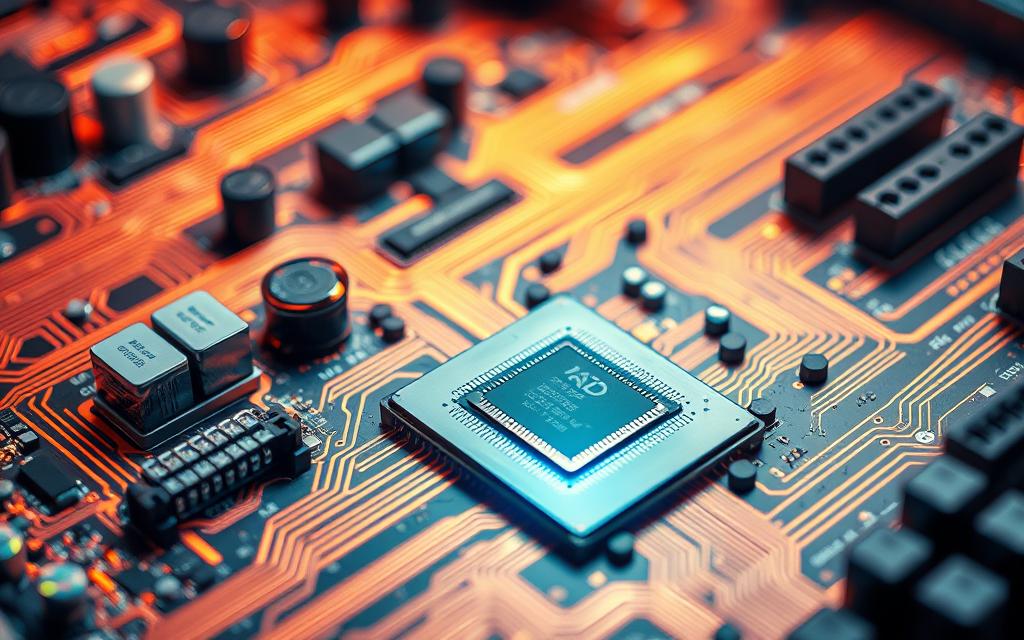
Graphics APIs like DirectX and Vulkan optimize rendering processes. They allow programs to utilize hardware capabilities fully, delivering stunning visuals. Compiler optimizations further enhance performance by tailoring code to specific processors.
Memory management units (MMUs) allocate resources efficiently, ensuring smooth multitasking. Hardware acceleration, such as GPU processing, speeds up tasks like video rendering. Technologies like CUDA and OpenCL enable parallel computing, boosting performance for complex data operations.
Software-based monitoring tools track hardware health, alerting users to potential issues. Firmware updates, often delivered through software, improve functionality and security. Emulation allows programs to run on non-native systems, while native execution ensures optimal performance.
Here’s a comparison of key interactions:
| Component | Role |
|---|---|
| BIOS/UEFI | Initializes hardware at startup |
| Drivers | Enable communication between software and hardware |
| APIs | Optimize graphics and processing |
| MMUs | Manage memory allocation |
| CUDA/OpenCL | Enable parallel computing |
Understanding these interactions helps optimize system performance. Whether you’re a developer or an enthusiast, this knowledge is invaluable for troubleshooting and upgrades.
Upgrading Your Computer Hardware: What to Consider
Enhancing your system’s capabilities requires careful planning and understanding of key factors. Upgrading components can boost performance, but it’s essential to ensure compatibility and avoid potential bottlenecks.
Start by identifying which parts need improvement. For example, a slow unit might benefit from additional RAM or a faster SSD. Use tools like benchmarking software to pinpoint areas for enhancement.
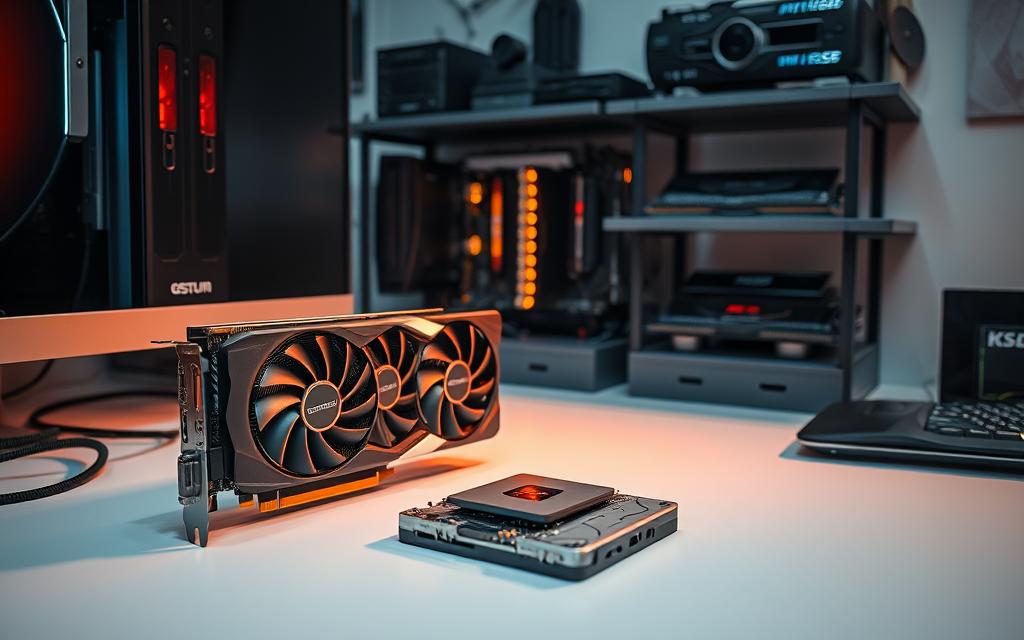
When selecting new components, check their lifespan and thermal constraints. High-quality parts often last longer and operate more efficiently. Ensure your power supply can handle the increased load by using a wattage calculator.
Case size and clearance are also critical. Larger GPUs and cooling systems may not fit in compact cases. Measure your current setup and compare it with the dimensions of new hardware.
Thermal management is another key consideration. Overheating can reduce component lifespan and performance. Ensure proper airflow and consider adding extra fans or liquid cooling solutions.
Warranty implications should not be overlooked. Some manufacturers void warranties if unauthorized upgrades are performed. Always review the terms before making changes.
Finally, prepare for potential OS reinstallation. Significant hardware changes may require a fresh install to ensure stability and compatibility. For more insights, explore this guide on exploring hardware upgrades.
By following these steps, you can ensure a smooth and effective upgrading process. For additional tips on component selection, visit this resource on component compatibility.
Conclusion
Understanding how core components interact ensures a seamless computing experience. From the CPU to storage drives, each element plays a vital role in enhancing performance. Compatibility between these parts is crucial for smooth operations and avoiding bottlenecks.
Upgrading your system can significantly boost efficiency. Consider adding more RAM or switching to an SSD for faster data access. Emerging technologies like PCIe 5.0 offer higher data transfer rates, future-proofing your setup.
Hands-on learning is key to mastering computer hardware. Use diagnostic tools to identify issues and explore professional certification paths for deeper knowledge. Regular maintenance, such as cleaning dust and updating drivers, extends the lifespan of your components.
For those ready to dive in, building your own system is a rewarding way to understand how these tasks come together. Start with a clear plan and ensure all parts work harmoniously for optimal results.
FAQ
What is the role of the motherboard in a computer?
The motherboard acts as the central hub, connecting all internal hardware components like the CPU, RAM, and storage drives, ensuring seamless communication.
Why is the CPU considered the brain of the computer?
The CPU (Central Processing Unit) executes instructions from software and performs calculations, making it essential for overall system performance.
How does RAM improve computer performance?
RAM (Random Access Memory) provides temporary storage for active programs and data, allowing faster access and smoother multitasking.
What are the differences between HDD and SSD storage drives?
HDDs (Hard Disk Drives) use spinning disks for data storage, while SSDs (Solid State Drives) rely on flash memory, offering faster speeds and greater durability.
What are examples of input devices?
Input devices include keyboards, mice, scanners, and microphones, which allow users to interact with the computer and input data.
What are common output devices?
Monitors, printers, and speakers are typical output devices that display or produce results from the computer’s processing.
How do hardware and software work together?
Hardware provides the physical components, while software delivers instructions. Together, they enable the computer to perform tasks and run programs.
What should I consider when upgrading computer hardware?
Factors include compatibility with existing components, performance needs, and budget. Upgrading RAM or switching to an SSD can significantly boost speed.
